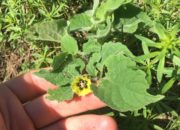Unless you are a gardener or botanist, you are unlikely to encounter Physalis frequently. Clammy Ground Cherries are easy to overlook, but native and widespread in Vermont. Additionally, tomatillos and domesticated Ground Cherries are frequently cultivated in gardens. In addition to the horticultural uses, these plants are host to four specialist bees in Vermont.
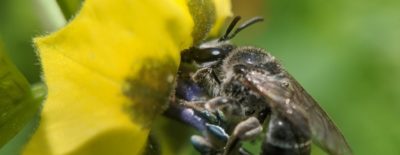
Broad-footed Cellophane Bee (Colletes latitarsis)
Despite not being recorded in VT until 2018, this is a widespread and common species that can be found most places Physalis is abundant. The name refers to the shape of the third segment of the hind legs - an important ID feature.
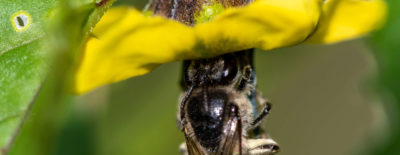
Williston's Cellophane Bee (Colletes willistoni)
Very similar to Broad-footed, this is primarily a mid-western species, known in VT from very few locations. Perhaps active slightly earlier than C. latitarsis.
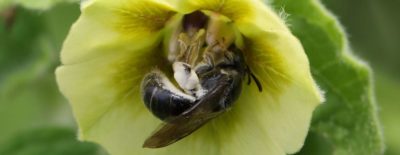
Ground Cherry Sweat Bee (Lasioglossum pectinatum)
Globally this is a rare and poorly known species, though perhaps under-recorded - first found in VT in 2020. Larger and darker than most other Lasioglossum species.
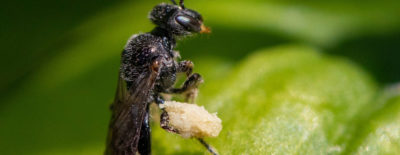
Ground-cherry Mining Bee (Perdita halictoides)
This tiny bee is both localized and easy to over look. Like other Fairy Bees (genus Perdita) it needs sand for nesting, in addition to Physalis for food.
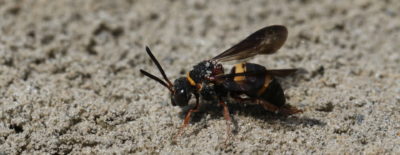
Two-banded Cellophane-cuckoo Bee (Epeolus bifasciatus)
While not a pollen specialist itself, this is a cleptoparasite of Broad-footed Cellophane Bees, so is indirectly dependent on Physalis. Because it is boldly patterned and visits a variety of flowers, it is often more noticeable than its host.
While looking for these bees, watch for two other Physalis specialists – a fly and a beetle.
Physalis Distribution: To see the global distribution, check out the iNaturalist account, and toggle the GBIF layer on the map.
